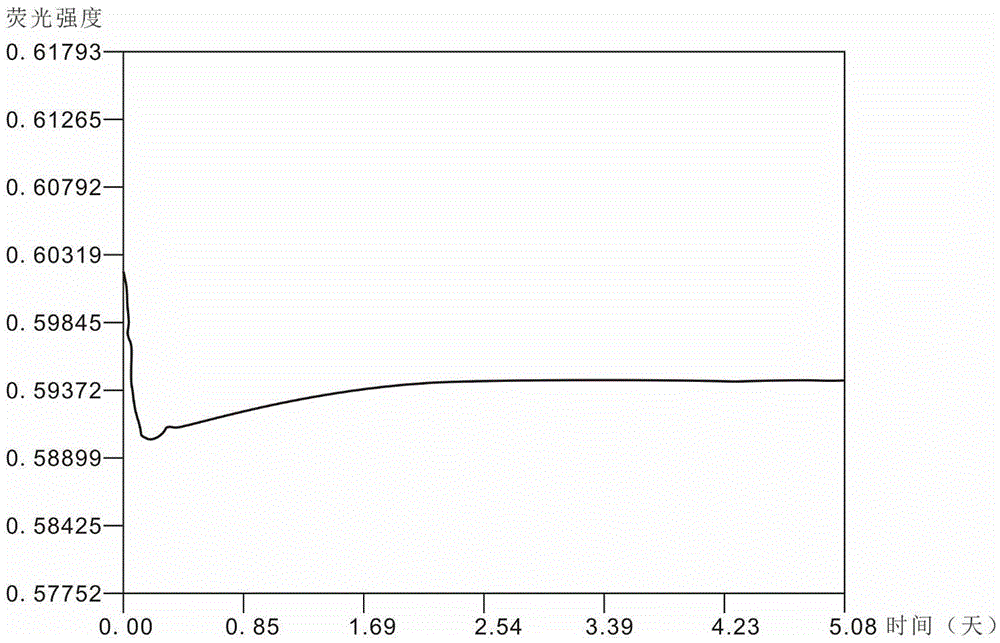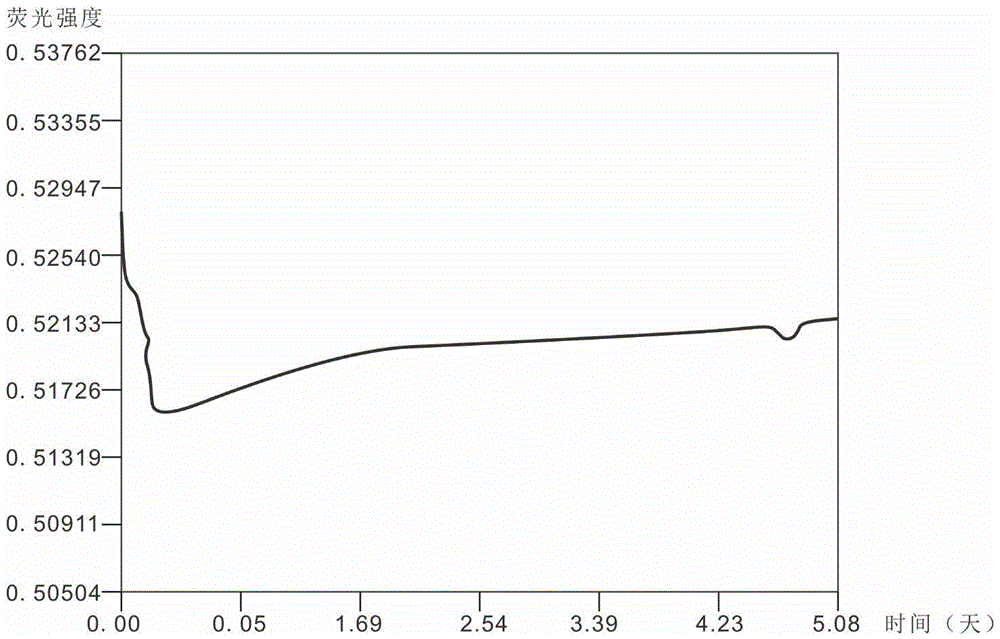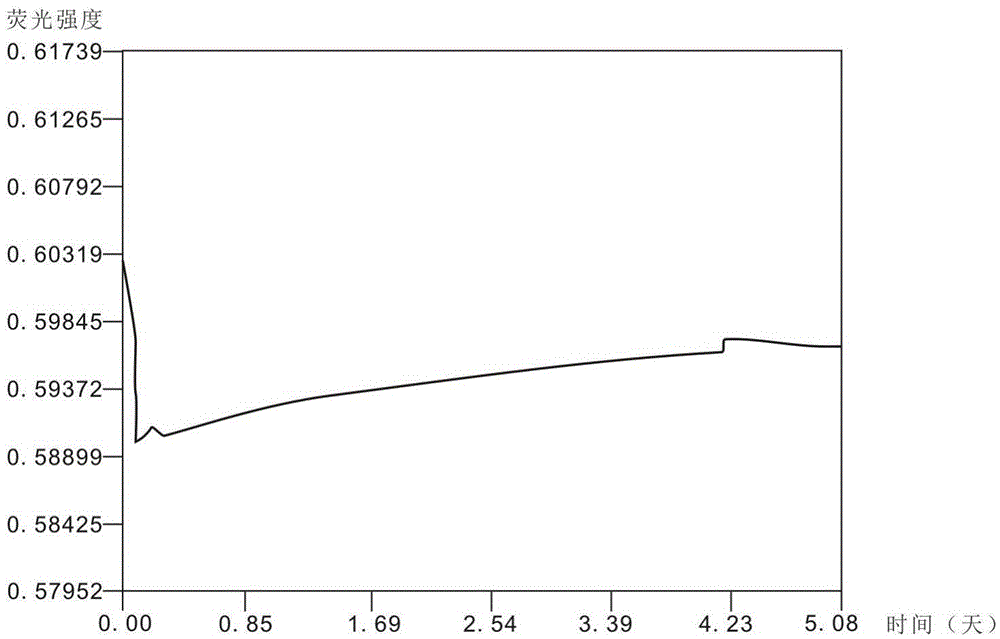Blood culture bottle
A blood culture and culture bottle technology, applied in the field of blood culture bottles, can solve problems such as product failure and unacceptable fluorescent substances, and achieve the effects of not being easy to quench, reducing the probability of false negatives or false positives, and high sensitivity
- Summary
- Abstract
- Description
- Claims
- Application Information
AI Technical Summary
Problems solved by technology
Method used
Image
Examples
Embodiment 1
[0034] Example 1 Preparation of rhodamine pH fluorescent probe containing glutamic acid structure
[0035] The preparation method of the rhodamine pH fluorescent probe containing the glutamic acid structure of the present embodiment may further comprise the steps:
[0036] Step 1: mix 0.002 mol of Rhodamine 110 with 0.012 mol of POCl 3 Add it into 20ml of acetonitrile, under the protection of nitrogen, heat to 60°C, keep the reaction for 3-5 hours, monitor by TLC until the reaction is complete and the raw materials disappear. Cool down to room temperature, slowly add 0.002 mole of dimethyl glutamate and 0.006 mole of triethylamine in acetonitrile (10 ml) solution, react at room temperature for three hours, TLC monitors until the acid chloride completely disappears. Concentrate the reaction solution to dryness, add 30ml ethyl acetate and 20ml water, extract and separate layers, extract the water layer twice with 20ml water, combine the organic layers, dry over anhydrous sodium...
Embodiment 2
[0038] Example 2 Preparation of rhodamine pH fluorescent probe containing glutamic acid structure
[0039] The preparation method of the rhodamine pH fluorescent probe containing the glutamic acid structure of the present embodiment may further comprise the steps:
[0040] Step 1: Mix 0.002 mol of Rhodamine 6G with 0.01 mol of POCl 3 Add it into 20ml of acetonitrile, under the protection of nitrogen, heat to 60°C, keep the reaction for 3-5 hours, monitor by TLC until the reaction is complete and the raw materials disappear. Cool down to room temperature, slowly add 0.002 mol of dimethyl glutamate and 0.008 mol of triethylamine in acetonitrile (10 ml) solution, react at room temperature for three hours, TLC monitors until the acid chloride completely disappears. Concentrate the reaction solution to dryness, add 30ml ethyl acetate and 20ml water, extract and separate layers, extract the water layer twice with 20ml water, combine the organic layers, dry over anhydrous sodium sul...
Embodiment 3
[0042] Example 3 Preparation of rhodamine pH fluorescent probe containing glutamic acid structure
[0043] The preparation method of the rhodamine pH fluorescent probe containing the glutamic acid structure of the present embodiment may further comprise the steps:
[0044] The first step: mix 0.002 mol of tetramethylrhodamine TMR with 0.008 mol of POCl 3 Add it into 20ml of acetonitrile, under the protection of nitrogen, heat to 60°C, keep the reaction for 3-5 hours, monitor by TLC until the reaction is complete and the raw materials disappear. Cool down to room temperature, slowly add 0.002 mole of dimethyl glutamate and 0.01 mole of triethylamine in acetonitrile (10ml) solution, react at room temperature for three hours, TLC monitors until the acid chloride completely disappears. Concentrate the reaction solution to dryness, add 30ml ethyl acetate and 20ml water, extract and separate layers, extract the water layer twice with 20ml water, combine the organic layers, dry over...
PUM
 Login to View More
Login to View More Abstract
Description
Claims
Application Information
 Login to View More
Login to View More - R&D
- Intellectual Property
- Life Sciences
- Materials
- Tech Scout
- Unparalleled Data Quality
- Higher Quality Content
- 60% Fewer Hallucinations
Browse by: Latest US Patents, China's latest patents, Technical Efficacy Thesaurus, Application Domain, Technology Topic, Popular Technical Reports.
© 2025 PatSnap. All rights reserved.Legal|Privacy policy|Modern Slavery Act Transparency Statement|Sitemap|About US| Contact US: help@patsnap.com



